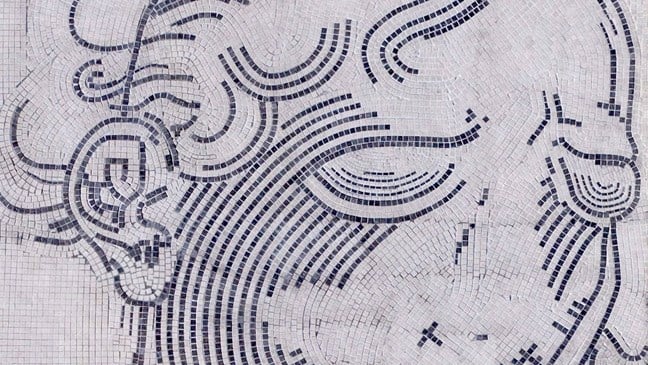Matias Faldbakken
Kjøllen
The artwork Skyldner (“Debtor”) .
- Artist:
- Matias Faldbakken
- Finished:
- 2022

Commissioned by the NPRA, Matias Faldbakken has converted a parking area on County Road 27 into a mosaic of 260 m2 flat on the ground.
Along the county road, a number of small parking areas provide great views towards the mountains of Rondane. In the work to provide an art installation along the road, it was crucial for the artist to use an existing area to avoid further interference in nature. By creating a mosaic at Kjøllen, the artist has transformed the rather inconspicuous parking area into an attraction in itself. The artwork is designed as a large horizontal picture that you can stand on while taking in the view.
The completed artwork is made of light and dark granite - 26,000 pieces of stone, each of 10x10 cm, put together by professional craftsmen. The work measures 20x13 metres. -With a mosaic installed in Rondane you will have a picture made in stone; stone returned to the mountain, so to speak. It becomes a material image that is able to withstand the forces of nature, and that doesn’t destroy nature," Faldbakken explains.
"Debtor" is the artist's drawing of a small wooden bust from the National Gallery's collection, probably a “Head of Christ” from the 12th century This is a motif that Faldbakken has used in a number of contexts. According to the artist, the title "Debtor" is based on the assumption that what keeps people in place in a global economic cooperation may be the notion of - and the feeling of - debt.
According to Faldbakken, a debtor denotes a person who owes an obligation. Someone that has an unsettled debt. The various drawings Faldbakken has made of the head (of Christ) have been the artist’s attempt to create a 'portrait of debt'.
Mosaic as a form of expression goes back thousands of years and is one of the oldest preserved art forms in the world. Famous mosaics from Mesopotamia, Greece, Pompeii and Herculaneum, for example, were often placed on floors and were pictures meant to be walked on.